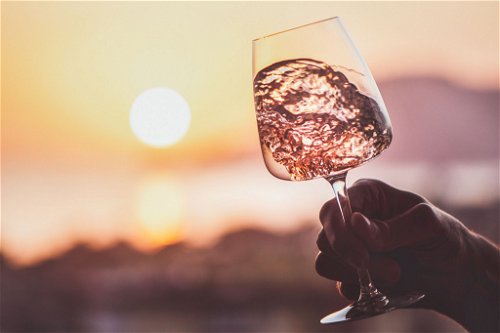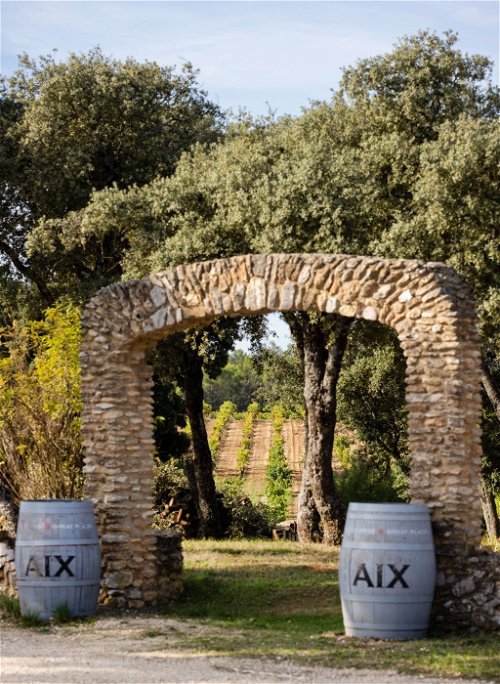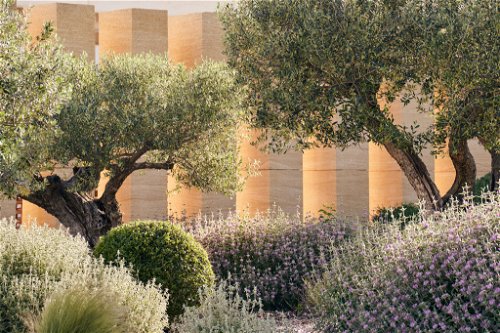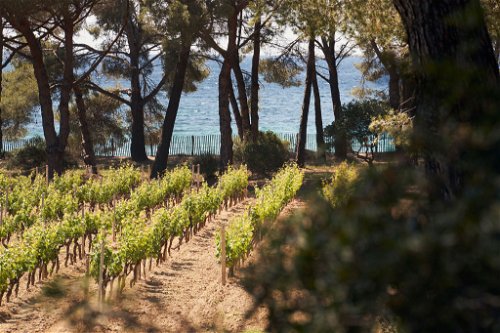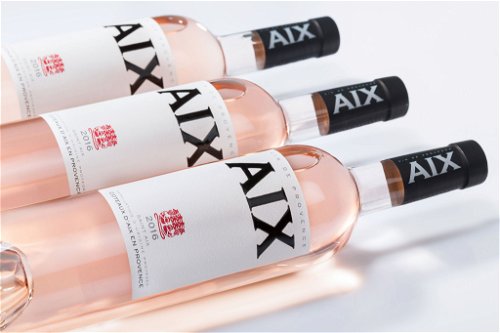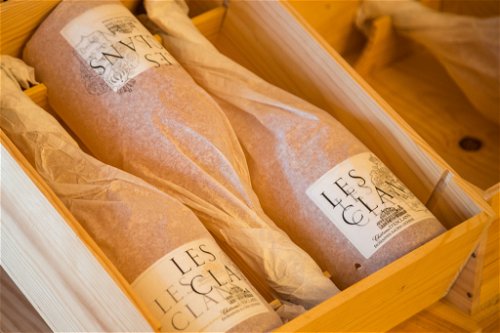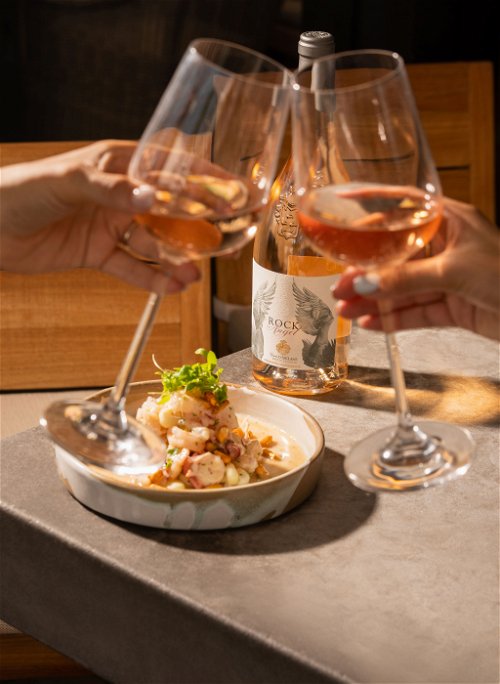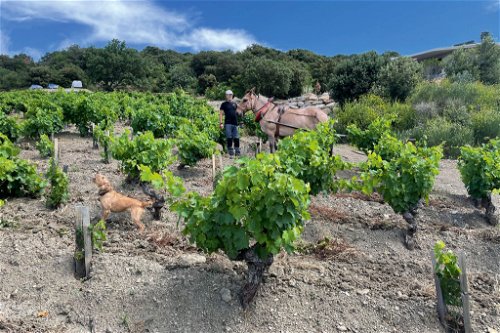La vie en rose: all about the summer star among wines
Rosé wine is a summer star: with its subtle play of colors, it provides the perfect accent for enjoying wine under a blue sky. In terms of sales figures, rosé has only known one direction for several years: steeply upwards.
Pastel colours, onion skin, coral pink, salmon orange, brick red. The descriptions of the colour palette of rosé wines are as nuanced as the wine styles themselves. It is no coincidence that rosé experts often bottle their wines in white glass; the pleasure should start with the appearance. And it is precisely the pleasure communicated to the eye that is not left to chance: top rosés are not only produced for their taste, but also for their colour nuance – firstly in the vineyard, and then also during harvesting and pressing.
Two camps
Sometimes there are two opposing camps: one faction is convinced that the delicacy of a rosé wine is best expressed when it is light in colour and differs only by a nuance from the appearance of a white wine. The other party says: but no, a rosé also has red wine genes, you can find some tannin and colour in it, and a vinous, earthy fruit.
This difference of opinion cannot be resolved - and in the end that is probably a good thing, because there is an ideal drinking occasion for every type of rosé. And the appreciation of wine drinkers hardly makes a difference between light and dark, between pink and orange anyway; in terms of sales figures, all types of rosé have only known one direction for around ten years: steeply upwards.
We have outlined where the shades of some rosé archetypes lie in the spectrum of possible colours. Of course, the markings are generalisations, there are also darker Blanc de Noirs and lighter Cerasuolo, but the consensus of most winemakers runs in the direction of the indicated colour values.

Model Provence
When people think of rosé, they often think of Provence first – no other wine-growing region in the world is as closely associated with this wine colour as the southern French vacation region. According to figures from the Conseil Interprofessionnel des Vins de Provence CIVP, 90 percent of producers in the three appellations Côtes de Provence, Coteaux d'Aix-en-Provence and Coteaux Varois en Provence made rosé wine in the 2022 vintage. A total of 157 million bottles, which corresponds to 43 percent of French rosé production and around six percent of all rosé wines in the world. It is therefore hardly surprising that almost all rosé producers in the world emulate the Rosé de Provence, the light, fruity, fresh rosé that conveys an attitude to life like almost no other wine – sun, sea, beach and total lightness.
The success story
The success of the Rosé de Provence is closely linked to the region's history as a vacation destination. Of course, the region is one of the traditional wine regions with a history dating back to the sixth century, but Provence has only become rosé country in recent decades. The success story of Provençal rosé began after the Second World War, when summer tourism literally exploded.
The rather rustic red wines produced in Provence at the time, made from varieties such as Carignan, Cinsault and Grenache, were not at all suited to the tourist's desire for and expectation of summer pleasure, let alone the food they were served – the fish, the Ratatouille or the grilled lamb. But quickly pressed or after a short time on the skins, the same grapes could be transformed into a first-class summer wine, which the winegrowers did in large numbers from then on.
Until the 1980s, Provençal rosé was rather dark in colour. Winemaker Régine Sumeire from Domaine Barbeyrolles was the first to succeed in producing a light-coloured wine from Grenache grapes in the early 1980s – thanks to inspiration from Bordeaux and Champagne.
The cellar masters of the region continued to perfect the technique. Today, the grapes for the Rosé de Provence are harvested by machine at night and at lightning speed and processed immediately. Cool temperatures and the exclusion of oxygen are the top priority in modern wineries. Wineries such as Maison Saint Aix, for example, have specialised entirely in rosé production. Marketing has also been perfected. Rosé labels such as those from Whispering Angel, Domaines Ott or the Brad Pitt project Miraval have long been icons.
Today, Provence is so strongly associated with a single wine, as is otherwise only the case in Champagne, with its sparkling wine. In fact, Champagne in Provence is making its presence felt today in the form of major investors. Champagne houses such as Roederer, LVMH, Vranken Pommery and Bruno Paillard have become active in Provence in recent years and are using their expertise to further boost the region.
There are also rosé traditions in other regions of France, for example in Sancerre (based on Pinot Noir), or in the higher regions of Languedoc, where the highest-rated rosé of this year's tasting comes from: Gérard Bertrand's "Clos du Temple" grows in the AOC Cabrières at an altitude of 250 meters. A wine with history; Louis XIV, the Sun King, already knew and appreciated the wines of this origin.
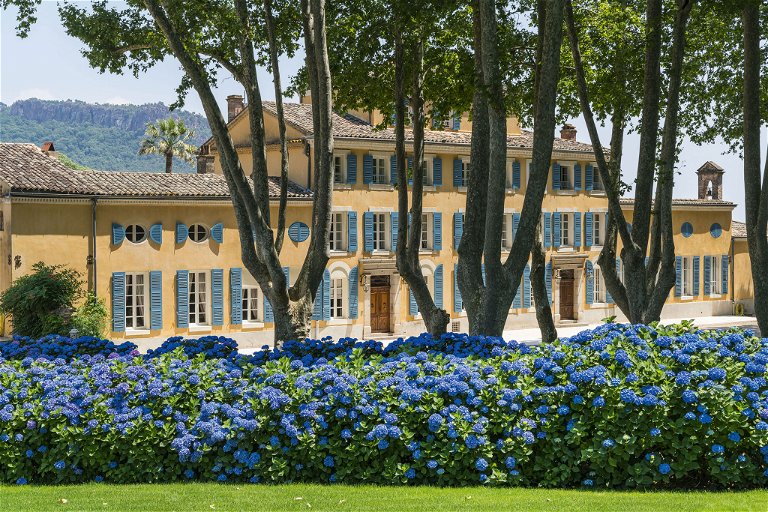
Italy's rosati
In Italy, rosé wine is called "Rosato". The first Rosato was produced in Salento, the boot heel of the Apennine Peninsula, in 1943. A second area with a rosé tradition is also located in Apulia, a little further north near Castel del Monte. There, the Bombino Nero grape has its own DOCG designation of origin as a rosé. At the tip of the boot, in Calabria, Cirò Rosato has long been a household name. In Abruzzo, rosé wines made from the Montepulciano grape are widespread, where they are called Cerasuolo, thanks to the cherry-red color of the wines.
Rosé wines also have a long tradition in Bardolino on the south-eastern shore of Lake Garda. There, the rosé is called Chiaretto di Bardolino. On the opposite bank, Valtenesi Rosato is made from the Groppello grape. In South Tyrol, the Lagrein Kretzer is produced from the intensely colored Lagrein after a few hours of maceration. Tuscany has also been one of the major suppliers of Rosati for at least a decade.
Germany: Pinot rules
In the past, the German "Weißherbst" was often a slightly botrytis-influenced, powerful rosé. Today, most good producers use grapes that are healthy to the core and work towards freshness and elegance. Or – another trend – they put the rosés from their most extracted grapes in wooden barrels to give them additional depth and ageing potential in the réserve style. Such wines can also be exciting wines for the table. The majority of German rosés are made from Pinot Noir, but some winegrowers are also experimenting successfully with Cabernet Sauvignon, Merlot and Syrah, for example, or – in the tradition of Champagne – with Pinot Meunier.
Switzerland: The partridge eye
As in Germany, Pinot Noir is the preferred grape for rosé production in Switzerland. The canton of Neuchâtel can claim to have invented the "Œil de Perdrix", named after the colour of the partridge's eye. Today however, this designation can be used anywhere in Switzerland, and the wines rarely inspire. A speciality of Valais is the Dôle Blanche – a lightly pressed wine made from Pinot Noir and Gamay. The best rosés in Switzerland impress with their crisp acidity, animating fruit and beautiful flow. And they bridge the gap between lively summer wine and serious food wine.
Austrian legend
In Austria, rosé still wine led a shadowy existence for a long time, and it is only in recent years that production has been revived somewhat. Initially, the proportion of red wine in the vineyards increased from ten to 33 percent, which also boosted the production of rosé wines somewhat. At first, with a few exceptions, this branch of production was regarded more as a by-product of red wine. These wines tasted accordingly, and consumer approval was limited.
The only special and qualitatively significant rosé wine forms a category of its own. The Schilcher comes from the small cultivation zone of Western Styria and today has DAC status. The racy rosé wine, which has been produced there from the rustic red Blauer Wildbacher variety since time immemorial, is an Austrian wine legend. Grown on steep slopes, characterised by its terroir, primary rock soils of gneiss and mica schist, it is an unmistakable wine of origin.
A few years ago, the protected origin Rosalia DAC was established in Burgenland, where special attention is also paid to the targeted production of rosé wines from Blaufränkisch and Blauem Zweigelt. The declining sales of red wine and the targeted production of grapes for rosé production have contributed to the growing popularity of rosé in the Alpine republic.
Don't miss out!
Sign up now for our newsletter.

